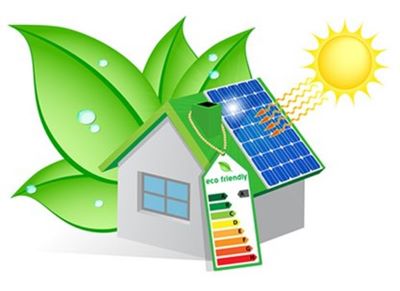Context
India is experiencing a surge in construction activities, particularly in the residential sector, with more than 300,000 housing units erected annually. While this growth promises economic opportunities and improved living standards, it also brings forth significant environmental challenges. The construction industry, being a major energy consumer, accounts for over 33% of India’s electricity usage, contributing substantially to environmental degradation and climate change. Furthermore, projections from the India Cooling Action Plan indicate an eight-fold increase in cooling demand between 2017 and 2037, underlining the critical need for thermal comfort enhancement alongside a reduction in active cooling demand.
Importance of Addressing Energy Inefficiency in Residential Buildings
The significance of addressing energy inefficiency in residential buildings cannot be overstated, particularly in a country like India, where rapid urbanization and economic growth exacerbate energy demands. The construction sector's energy-intensive nature contributes significantly to environmental degradation and climate change, making it imperative to adopt sustainable practices. Initiatives like the Eco-Niwas Samhita (ENS) and the Residential Energy Conservation Building Code play a crucial role in promoting energy-efficient construction practices. By introducing metrics such as the Residential Envelope Transmittance Value (RETV), these initiatives encourage builders to prioritize materials and designs that minimize heat transfer, thus reducing the need for active cooling systems and lowering energy consumption.
Lowering energy inefficiency in residential buildings not only reduces environmental impact but also improves the quality of life for occupants. Buildings with better thermal performance offer enhanced comfort, particularly in regions experiencing extreme temperatures. Additionally, energy-efficient buildings incur lower utility expenses, providing long-term financial benefits for residents. However, addressing energy inefficiency requires a shift in mindset within the construction industry. Builders and developers must prioritize sustainable materials and designs, even if they entail higher upfront costs. Government incentives and regulations can play a crucial role in driving this transition towards energy-efficient construction practices.
Understanding Residential Envelope Transmittance Value (RETV)
The Residential Envelope Transmittance Value (RETV) serves as a crucial metric in assessing the energy performance of residential buildings. It quantifies the rate of heat transfer through a building's envelope, encompassing walls, roofs, and windows. Lower RETV values indicate better insulation and reduced heat transfer, leading to improved thermal comfort and lower energy consumption for heating and cooling. By setting standards for RETV, initiatives like the Eco-Niwas Samhita (ENS) aim to promote the adoption of energy-efficient building materials and designs.
Achieving lower RETV values requires careful consideration of various factors, including building orientation, insulation materials, and window specifications. Climate-appropriate design plays a significant role, as building envelopes must effectively mitigate heat gain in hot climates and heat loss in colder regions. Additionally, advancements in building materials, such as Autoclaved Aerated Concrete (AAC) blocks, offer opportunities to enhance thermal performance while reducing energy consumption. Overall, understanding and optimizing RETV can significantly contribute to the energy efficiency and sustainability of residential buildings.
Autoclaved Aerated Concrete (AAC) Blocks: Optimal Building Material
Autoclaved Aerated Concrete (AAC) blocks emerge as a promising solution for addressing energy inefficiency in residential construction. These lightweight and porous blocks offer excellent thermal insulation properties, significantly reducing heat transfer through building envelopes. Compared to traditional materials like red bricks and monolithic concrete, AAC blocks exhibit lower embodied energy, making them more environmentally friendly. Moreover, AAC blocks contribute to reduced waste and emissions during manufacturing, further enhancing their sustainability credentials.
One of the key advantages of AAC blocks is their construction efficiency. These blocks are lightweight and easy to handle, facilitating faster construction times compared to conventional materials. Additionally, AAC blocks offer versatility in design, allowing for various architectural styles while maintaining energy efficiency. Given India's growing construction demand and the need for sustainable building solutions, AAC blocks present a compelling choice for developers and builders seeking to reduce energy consumption and environmental impact.
Conclusion
In conclusion, addressing energy inefficiency in residential buildings is paramount for India's sustainable development goals. Initiatives such as the Eco-Niwas Samhita (ENS) and the Residential Energy Conservation Building Code play a crucial role in promoting energy-efficient construction practices. By adopting metrics like the Residential Envelope Transmittance Value (RETV), builders can prioritize materials and designs that minimize heat transfer, thereby reducing energy consumption and enhancing occupant comfort.
Autoclaved Aerated Concrete (AAC) blocks emerge as an optimal building material, offering excellent thermal insulation properties and lower embodied energy compared to traditional materials like red bricks and monolithic concrete. Their lightweight nature and ease of construction make them well-suited for addressing India's growing construction needs while reducing environmental impact.
Moving forward, interdisciplinary collaborations and innovation in building materials are essential to further advance sustainable construction practices in India. By embracing energy-efficient designs and materials, the construction industry can contribute significantly to mitigating climate change and improving the quality of life for millions of people across the country.
|
Probable Questions for UPSC Mains Exam
|
Source – The Hindu







